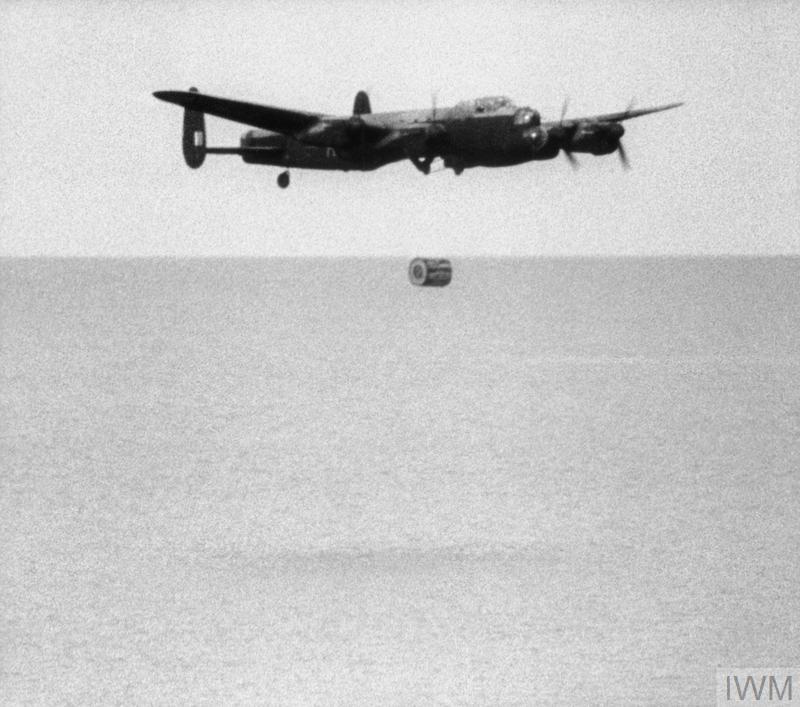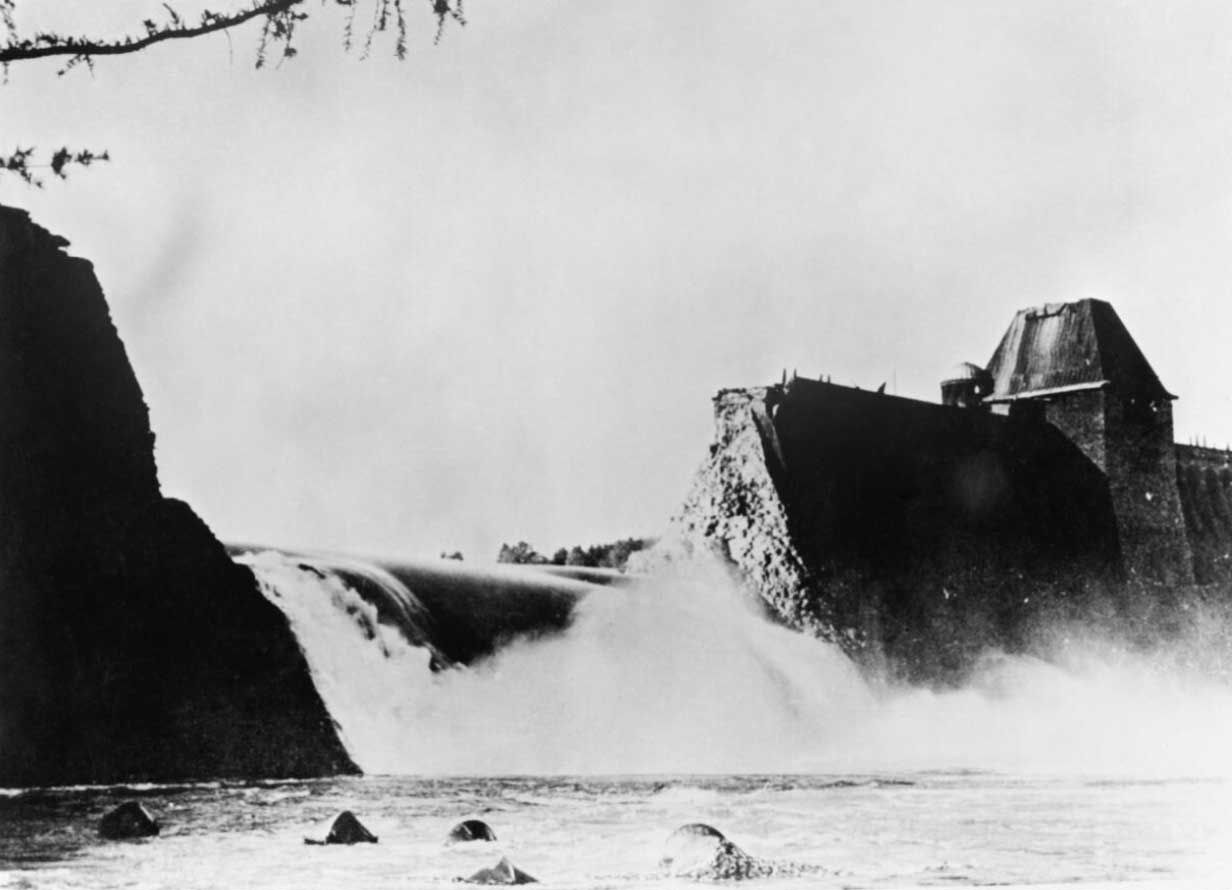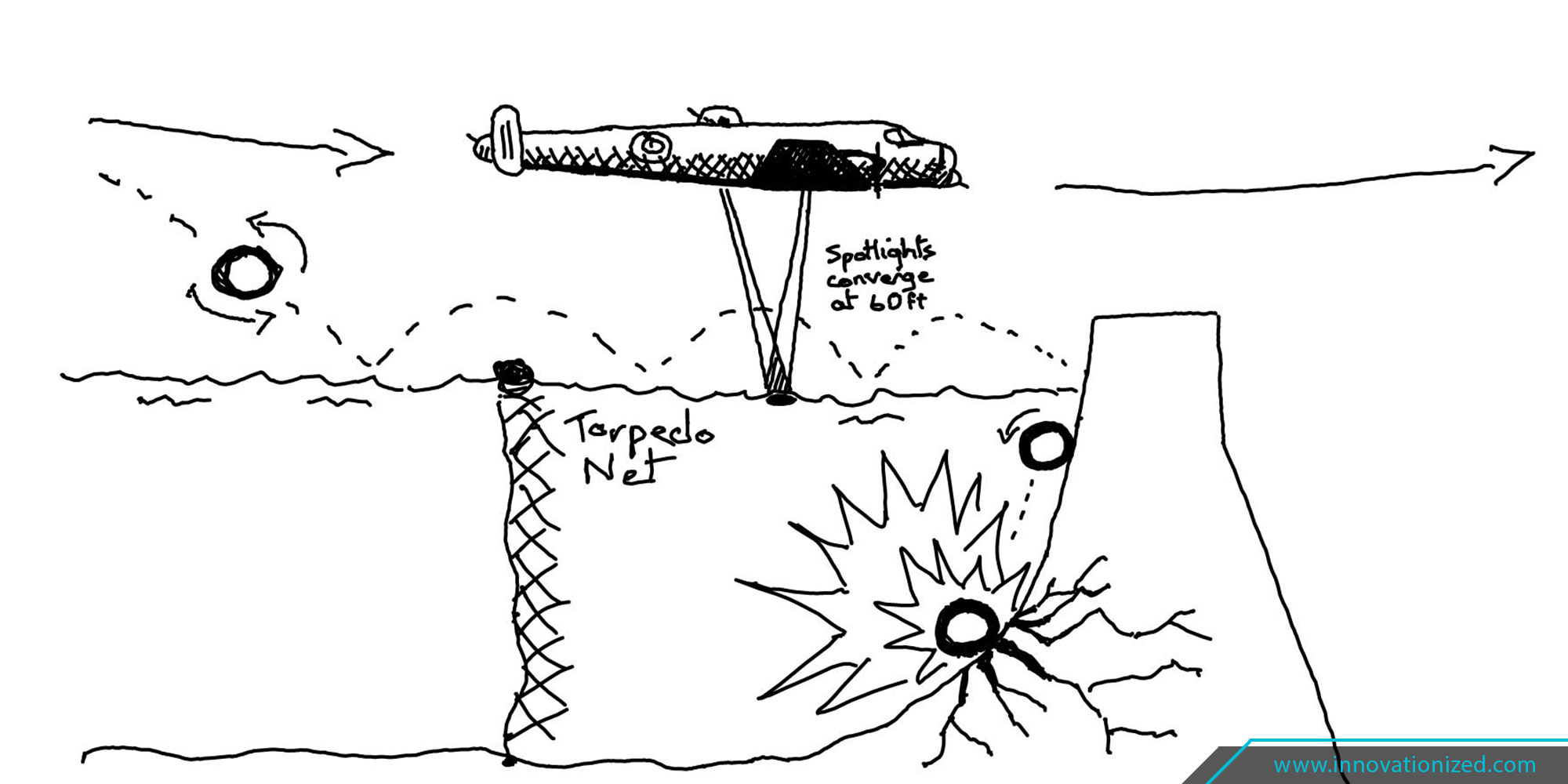I turned the corner and saw it. I instantly knew what it was. A bomb.
I was thrilled.

On December 8, 2022, the last living connection to that bomb broke.
George Leonard “Johnny” Johnson passed away at 101 years of age. Johnson was a squadron leader and bomb aimer during Operation Chastise of World War II.
Operation Chastise
Operation Chastise has been called the most innovative and daring air raid of WWII.
The plan was to destroy the Eder, Möhne, and Sorpe dams that supplied water and hydroelectric power to Nazi Germany’s industrial Ruhr Valley.
The challenge was formidable. The dams were well guarded with anti-aircraft weaponry.
Even if a plane got through, a bomb hitting the top of the dam wall would do little damage. Dropping a torpedo would be better, but the reservoirs were protected with anti-torpedo nets.
Barnes Wallis: The Brains Behind the Bouncing Bomb
Barnes Wallis, an aeronautical designer and military engineer, set about designing a suitable bomb.

What if the bomb could fly over the water, avoiding the torpedo nets, and then hit the wall and sink, exploding at the base of the wall where the most damage would be inflicted?
And so, Wallis conceived of the “bouncing bomb,” code named “Upkeep.”
The initial prototype, the bomb I stumbled upon in 2014, was round with dimples, like a golf ball. However, during testing the spherical casing shattered on impact, and was thus discarded.
The final version of the “Upkeep” bomb was cylindrical, weighed 9,000 lbs, and spun backwards at 500 rpm before being released at just 60 feet above the water. The backspin helped it skip over the water, and after hitting the wall, caused it to roll its way down to the base of the wall, before exploding at depth to create maximum damage.

The Dambusters Bombing Raid
On May 16, 1943, 133 airmen in 19 Avro Lancaster bombers left to carry out the bombing raid.
The operation succeeded in breaching two of the dams, Eder and Möhne, and inflicting significant damage on the industrial region. Two hydroelectric power stations were destroyed, and several more damaged. Industrial factories and mines down river were damaged by flooding.
But it came at a high cost.
Of the 133 airmen, only 77 returned. 53 were killed and 3 captured by the Nazis.
Was the Dambusters Raid a Success?
Was Operation Chastise a success?
It was certainly not a complete success.
The Eder dam was not of industrial importance, and its breaching only affected the agricultural region.
The destruction of the Mohne dam was a success.

Sorpe dam was not destroyed. This type of dam actually need a different bomb and a different flight path inline with the dirt/clay wall rather than perpendicular to it. In addition, it had a concrete core which meant it was not destroyed.
Despite the missions setbacks, the operation meant a huge diversion of resources by Germany, to rebuild the damaged dams, and to protect other dams.
It was a huge morale boost to the Allies, Churchill mentioned it in a speech in the US Congress a few days later.
It’s a fascinating story of a dangerous and daring raid, striking at the heart of Nazi Germany’s military might, led by brave and resourceful men.
The movie, “The Dam Busters” (1955) is largely accurate and worth watching if you are interested in the topic.





